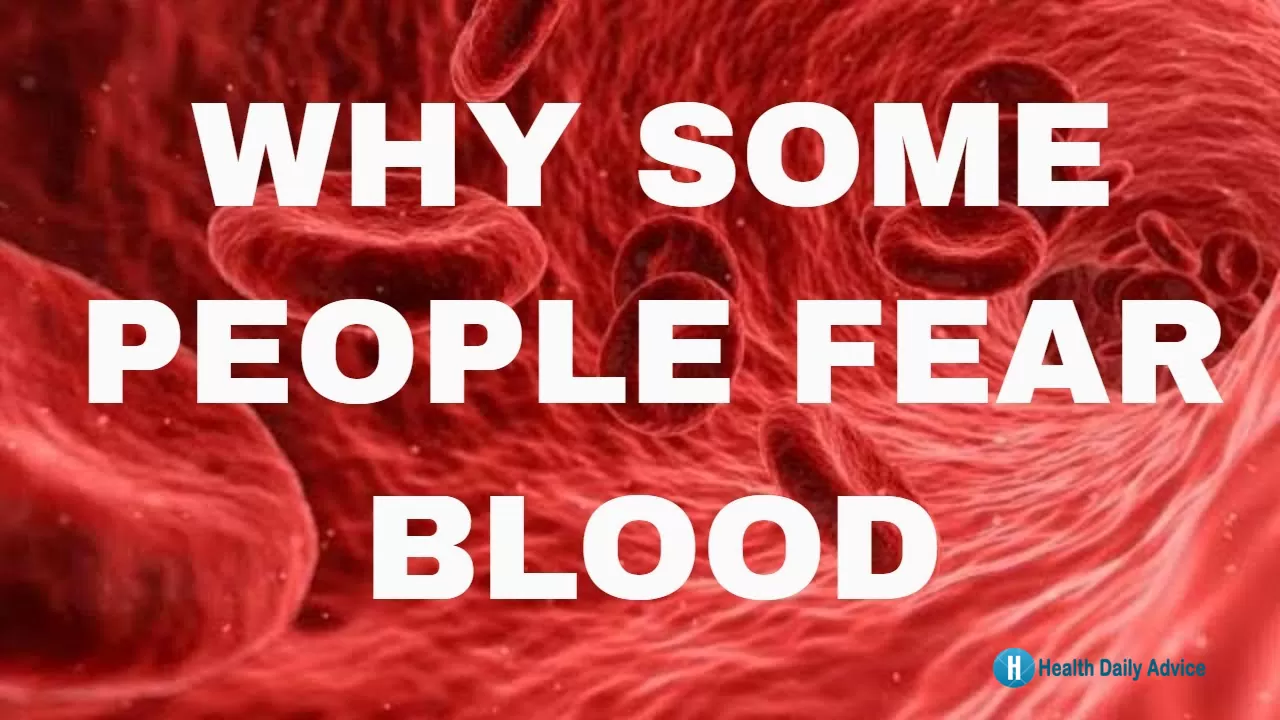Introduction
When it comes to understanding hemophobia, knowledge is power. Hemophobia, often referred to as the fear of blood, is a condition that affects many individuals worldwide. This article aims to shed light on the signs and symptoms of hemophobia, offering insights into its causes and potential coping mechanisms. Whether you’re seeking information for yourself or someone you care about, read on to gain a better understanding of this common phobia.
What is Hemophobia?
Hemophobia, also known as hematophobia, is a specific phobia characterized by an intense and irrational fear of blood. Individuals with hemophobia experience extreme anxiety and panic when exposed to blood or situations involving blood. This phobia can significantly impact a person’s daily life and may lead to avoidance behaviors.
The Origins of Hemophobia
Understanding the roots of hemophobia is essential for addressing it effectively. Often, this phobia develops in childhood, triggered by a traumatic experience involving blood. It can also be influenced by genetic predispositions or learned behaviors from family members who share the same fear.
Signs and Symptoms
Recognizing the signs and symptoms of hemophobia is crucial for early intervention and effective management. Here are the common indicators of this phobia:
1. Panic Attacks:
People with hemophobia often experience sudden and severe panic attacks when confronted with blood or the thought of it. These attacks can include rapid heartbeat, sweating, trembling, and a sense of impending doom.
2. Avoidance Behavior:
Individuals with hemophobia tend to go to great lengths to avoid situations where they might encounter blood. This can lead to social isolation and hinder daily activities.
3. Nausea and Dizziness:
Exposure to blood can trigger physical symptoms such as nausea, dizziness, and even fainting. These reactions are involuntary and uncontrollable.
4. Anxiety and Fear:
Persistent and excessive anxiety related to blood is a hallmark symptom. Even the thought of seeing blood can cause intense fear and distress.
5. Physical Symptoms:
Hemophobia can manifest with physical symptoms like a racing heart, shortness of breath, and a choking feeling.
6. Vivid Imaginations:
Those with hemophobia may experience distressing and intrusive thoughts about blood-related scenarios, making it difficult to focus on other aspects of life.

Causes of Hemophobia
Understanding the root causes of hemophobia can provide valuable insights into its development. While the exact cause may vary from person to person, some common factors include:
1. Traumatic Experience:
A traumatic event involving blood, such as an accident or witnessing a medical procedure, can trigger the development of hemophobia.
2. Genetics:
There may be a genetic predisposition to developing specific phobias, including hemophobia, within some families.
3. Learned Behavior:
Observing a family member or close friend who exhibits homophobic behavior can contribute to its development through social learning.
4. Evolutionary Factors:
Some experts suggest that a fear of blood may have evolutionary roots, as avoiding contaminated blood in the distant past could have been a survival advantage.
Coping Strategies
If you or someone you know is struggling with hemophobia, exploring coping strategies is essential. Here are some approaches that can help:
1. Therapy:
Cognitive-behavioral therapy (CBT) is a standard and effective treatment for specific phobias like hemophobia. It helps individuals identify and challenge irrational thoughts and behaviors.
2. Exposure Therapy:
Gradual exposure to blood-related stimuli under the guidance of a trained therapist can desensitize individuals to their fear.
3. Medication:
In some cases, medication, such as anti-anxiety drugs, may be prescribed to manage the symptoms of hemophobia.
4. Relaxation Techniques:
Learning relaxation techniques like deep breathing and mindfulness can help individuals manage anxiety when confronted with blood.
Coping Mechanisms
People with hemophobia often develop coping mechanisms to deal with their fear. These may include avoiding situations involving blood, such as hospitals or medical TV shows. While these strategies provide temporary relief, they do not address the root cause of the phobia.
The Impact of Hemophobia
Hemophobia can have a significant impact on an individual’s life. It may prevent them from pursuing certain careers in healthcare or even from accompanying loved ones to medical appointments. In extreme cases, it can lead to social isolation and depression.

Overcoming Hemophobia
Exposure Therapy
Exposure therapy is a common approach to treating hemophobia. It involves gradually exposing the individual to blood-related stimuli in a controlled and safe environment. Through repeated exposure, the fear response diminishes over time.
Cognitive Behavioral Therapy (CBT)
CBT is another effective method for managing hemophobia. It helps individuals identify and change negative thought patterns associated with their fear of blood. CBT equips them with strategies to manage their anxiety.
Medications
In some cases, medication may be prescribed to alleviate the symptoms of hemophobia. These medications may include anti-anxiety drugs or beta-blockers to reduce the physical symptoms of anxiety.
Support Systems
Building a strong support system is crucial for individuals with hemophobia. Friends and family can provide emotional support and encouragement throughout the treatment process. Joining support groups with others facing similar challenges can also be beneficial.
Living with Hemophobia
Living with hemophobia is manageable with the right tools and support. While overcoming this phobia may take time and effort, it is possible to regain control of one’s life and reduce the fear’s impact.
Frequently Asked Questions
Yes, hemophobia can be successfully treated through therapy, exposure therapy, medication, and relaxation techniques.
Yes, there are support groups and online communities where individuals with hemophobia can connect and share their experiences.
Hemophobia is relatively common, and many people seek help to overcome their fear of blood.
Yes, while it often starts in childhood, hemophobia can also develop in adulthood due to traumatic experiences or heightened anxiety.
Hemophobia is relatively rare compared to other phobias, but it can be highly distressing for those who experience it.
While a complete cure is not guaranteed, individuals can learn to manage and control their fear of blood through therapy and support.
While professional help is recommended, deep breathing exercises and progressive muscle relaxation techniques can provide temporary relief from anxiety.
When conducted by a trained therapist, exposure therapy is generally safe and effective for treating hemophobia without making it worse.
Conclusion
In summary, hemophobia is a challenging phobia that can significantly impact an individual’s life. Recognizing the signs and symptoms is the first step toward seeking help and effective treatment. Whether you’re personally dealing with hemophobia or trying to support someone who is, understanding the condition and available coping strategies is essential. Remember that help is available, and it’s possible to overcome the fear of blood and lead a fulfilling life.
Note:
So in This Post, Signs and Symptoms of Hemophobia What other points can you think of/have experienced? Let me know in the comments.
If you found this helpful feel free to share your experience if you can relate to these points and if you are comfortable share
For More Articles Related to Diseases Stay Tuned To our Site













